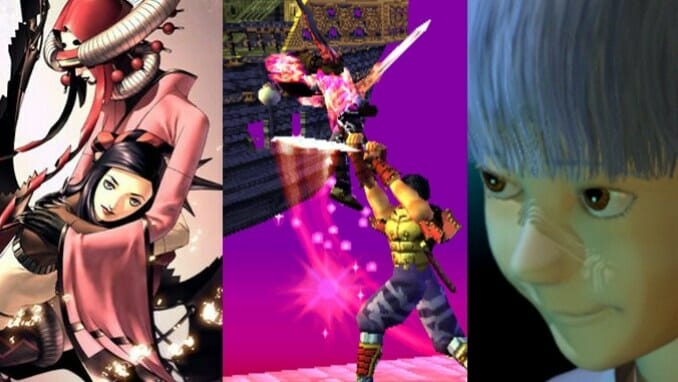
Over the last year or so, there’s been a keen uptick in interest in videogame preservation. Nintendo has begun mass takedowns of fanmade content. and game music while offering a scant selection of games on Nintendo Switch Online or manufacturing scarcity with time-limited releases. Elsewhere, some games lost in the annals of the first PlayStation like Legend of Mana, Grandia, and Saga Frontier received the remaster treatment, with Frontier even including completed scenarios made up from scrapped material. Moon: Remix RPG Adventure, a seminal work that’s inspired many games since its release, received its first Western release last August. What a translation it was, too—the script came courtesy of (former Paste contributor) Tim Rogers, who rendered the text with passion and humor, proudly showcasing why the game is so well-regarded and a great example of just how many of the greatest games for the PS1 never made it outside of Japan.
Many of the big publishers struggle with providing worthwhile ports and remasters of older games. Some, like the remaster of Shin Megami Tensei: Nocturne, are disproportionately priced (with the full game coming in at around $70) for the amount of effort put in to preserving the experience, framerate, and original intentions of the visual design. Still, these remasters are often the only reliable way to play these games legally in the modern day, with copies of out-of-print games becoming collector’s items only available for exorbitant prices. The lack of regard for preservation as well as the gatekeeping of emulation and fan efforts is one of the biggest gates in maintaining an actual historical record of games as a medium. It’s a shame how fractured it’s left the community.
As a major fan of the PlayStation and its vast library, I’ve thought long and hard about the games I’d love to see be made available for wider audiences on modern consoles. My choices aren’t necessarily the most notable games on the PlayStation, or even the “best”; they’re just games that would deepen our understanding of many of the games made today, and personal favorites that deserve their moment to shine. Believe me, I’d love it if the full PS1 library were made available today.
Baroque
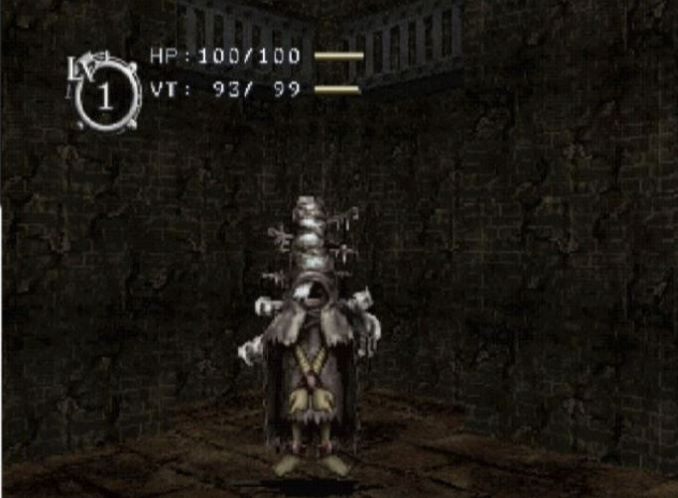
Baroque is a first-person dungeon crawler inspired by Chunsoft’s Mystery Dungeon series, and among the first of many to do something interesting and innovative with the format. In Baroque, you play a nameless amnesiac whose only impetus is to explore a labyrinth in a desolate wasteland calle the Neuro Tower. Decades before Hades, Baroque told its story through a series of successes and failures, unlocking new cutscenes and dialogue from the denizens of a nearby village after exploring and eventually dying in the Neuro Tower. In classic roguelike fashion, your level is reset and you lose all equipment each time you die, starting you with a fresh slate on each successive run. The only surefire equipment you’ll be going into Neuro Tower with is a rifle called Angelic, which can be used to one-shot a highly limited number of enemies.
There’s a remake of Baroque out there for PlayStation 2 and Wii that was localized outside of Japan, but no Western release of the original game exists. It’s a deeply unique and essential game, especially for fans of things like FromSoftware’s King’s Field series or fans of the apocalyptic mood of the older Shin Megami Tensei games.
Front Mission 3
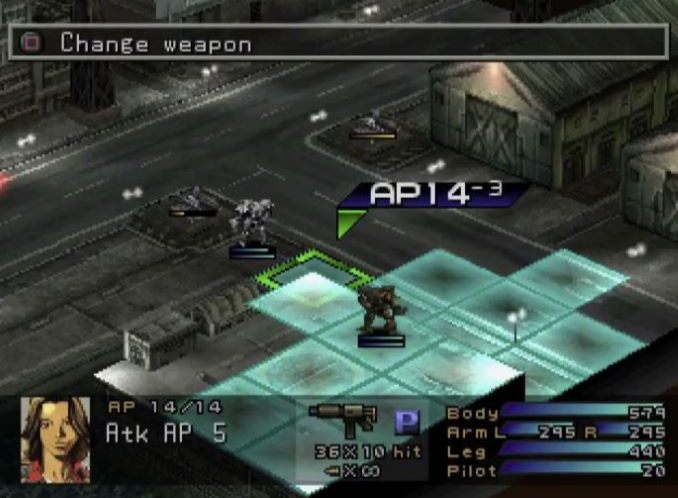
Front Mission 3 is the shining gem of Square’s excellent mech-based strategy RPG series. The game takes place amid an arms race between two powerful political forces in a near-future Southeast Asia. At the game’s start, you pick between playing as a pilot allied with the United States of the New Continent (a supernation of the North and South Americas, hilariously said to have been formed in 2020) or one with the People’s Republic of Da Han Zhong, formed from the merging of China and Taiwan. Both scenarios place you on opposite sides of a rebellion, giving the game a ton of replayability and depth. The game has gorgeous visual design thanks in part to character designer and art director Akihiro Yamada. Every map in the game seems washed with sepia and grey, giving it a nostalgic yet industrial look, which blends beautifully with some of the most intriguing UI design to be found in SRPGs.
The battles in Front Mission 3 are wonderfully streamlined, with fight scenarios happening on a zoomed-in version of the map to limit load times. In battle, the player can choose between focusing on attacking individual parts of an opposing mech or directly attacking the pilot in hopes of forcefully ejecting them. Empty mechs can then be hijacked by pilots on the player’s force.
The game was originally packaged with both Front Mission and Front Mission 2, which would be a welcome collection to any SRPG fan’s library.
Jade Cocoon

Jade Cocoon is something of an unsung gem; featuring character designs from Studio Ghibli’s Katsuya Kondou, sophisticated and unique pet-raising mechanics, sumptuous visuals, and a plot centered around coexisting with nature. The player takes on the role of a Cocoon Master, who is tasked with reviving villagers stricken with a curse of eternal sleep. He travels in search of an herb said to be able to lift the curse and must use the power of Minions, bug-like creatures that can be captured and purified, to traverse the deadly forest. Minions function as both battle companions and currency, and can be fused and customized to obtain new and stronger Minions.
Jade Cocoon is also notable for being almost fully voice-acted, a rarity for PS1 games (and the voice acting is actually pretty good, too!). Jade Cocoon is a brief and enchanting experience, and followed-up excellently with Jade Cocoon 2. After completing Jade Cocoon, a new and almost endless area is unlocked which contains randomly generated dungeons and new Minions to collect. These can be used in the game’s multiplayer, which loads the save files of two memory cards to allow for one-on-one battles. Jade Cocoon would be a great addition to modern consoles for any fans of monster collecting RPGs, especially if they’re seeking ones with a mythic feel.
Mega Man Legends

Mega Man Legends has long been lost in the lurch of the remaster rumor mill and has yet to surface with any substantial news. The duology is beloved for its deft blend of play styles as well as its whimsical art direction and Saturday morning cartoon tone. Both games involve Mega Man, a treasure hunter known as a “Digger,” spelunking through ruins in search of ancient artifacts used to power machinery. Mega Man, along with many other Diggers, is ultimately in search of the Mother Lode, an item that could effectively wipe out the world’s presiding energy crisis.
The games both have a lot of heart and great emotional beats balanced with hilarious dialogue and wacky hijinks. It would be an incredible loss if they weren’t both packaged with The Misadventures of Tron Bonne as well, which follows one of the main villains of the series through an almost experimental genre-mixed experience.
Mega Man Legends 3 may (or may not) be a pipe dream, but it’s never too late to revitalize the already excellent entries in Capcom’s most heartfelt spin-off.
Moonlight Syndrome

Moonlight Syndrome is part of the Twilight Syndrome series developed by Human Entertainment, who are best known for the Clock Tower franchise and (thanks to recent curiosity) Mizzurna Falls. In Japan, however, the Twilight Syndrome franchise is pretty recognizable, so much so that references to the games can be found in The Silver Case and Danganronpa 2, and Moonlight Syndrome specifically is cited as inspiration for the PlayStation 2 horror game Siren.
While the series mostly revolves around young high school age girls investigating ghosts and paranormal activity, Moonlight Syndrome, helmed by Goichi Suda, is a much more human kind of horror that takes place in an alternate reality. Moonlight Syndrome is Suda’s directorial debut, and after the game’s completion he would leave Human Entertainment to form his own studio Grasshopper Manufacture. It’s a shame that none of the Twilight Syndrome games have been released stateside, and even more tragic that a vital work in Suda’s career is missing—he still refers to Moonlight Syndrome as an influence on his later works, and even follows up on it in some of the games in his Kill the Past collection.
Persona 2: Innocent Sin / Eternal Punishment

It’s a bit of a joke these days that the Persona series begins with Persona 3, given how few fans of the series have played the franchise’s pre-PS2 fare, but it’s hard to blame them given the lack of availability afforded to these three seminal RPGs. Persona 2 in particular is perhaps the best the series has to offer—it’s quite a bit more psychological than Atlus’s later works, borrowing more heavily from the Jungian archetypes and motifs that inspired the spin-off series to begin with. The game follows a group of students that attend Seven Sisters High School as well as two journalists that work for a teen magazine as they investigate a mysterious wish-granting entity known as Joker (no relation to Persona 5’s protagonist).
Disgruntled Persona fans might be shocked to find that many of the complaints they have with the modern games are fully absent here. Persona 2 comes before the introduction of Social Links and the daily life simulation aspects the series is known for, resulting in a much more streamlined and focused story. The female characters aren’t nearly as objectified because of the absence of dating sim mechanics. There are, however, some more minor romantic dialogue options the player can choose from that allow the protagonist to pursue one of the three romanceable party members in the game. One of these is Jun Kurosu, who is the series’ only same-sex love interest to date.
The game’s direct sequel, Eternal Punishment, follows Maya Amano from the previous game with a much more ghost story-esque plot. Eternal Punishment’s PSP remake never made it outside of Japan despite being the only of the two to originally be released in the States on PlayStation (thanks to Innocent Sin’s depiction of a certain Führer). A collection of the two would be a great opportunity to package the duology more neatly to introduce the games to a whole new generation.
Soul Edge
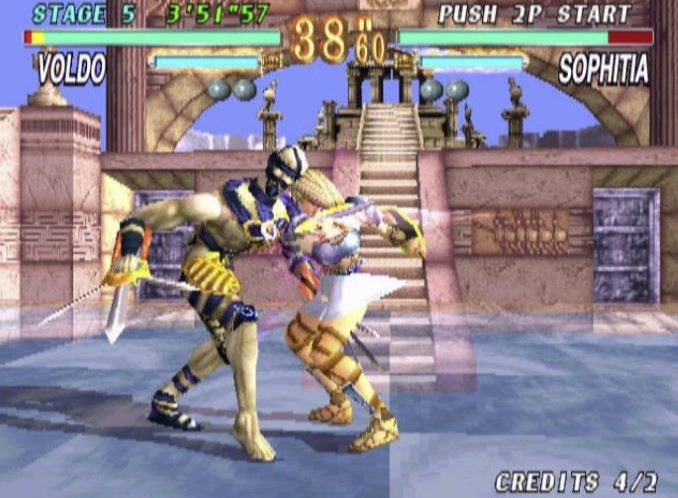
It’s hard to believe before Soulcalibur the cast of Namco’s iconic Renaissance age fighting series were chasing after not one but two swords. Soul Edge is generally overshadowed by its successor, which is often considered one of the best fighting games ever made, but is a perfectly fun game in its own right and in desperate need of a revival. Many of the franchise’s most iconic characters like Mitsurugi and Sophitia found their start here.
Soul Edge includes many interesting mechanics that were later scrapped for Soulcalibur. Most notably is a sort of rock-paper-scissors mechanic when combatants’ weapons meet, allowing the player who presses the correct button first an advantage. Jumps have a much more significant verticality to them, allowing players to fully jump behind their opponents. Soul Edge is, in many ways, the meeting ground for Tekken and Soulcalibur’s mechanics, which give battles a fast-paced, high risk feel. The game’s soundtrack is also one of the best you’ll find in any fighting game.
Soul Edge touts itself as “a tale of souls and swords, eternally retold”—it’s eternally replayable for sure, we just need a port to fulfill the prophecy!
UFO: A Day in the Life
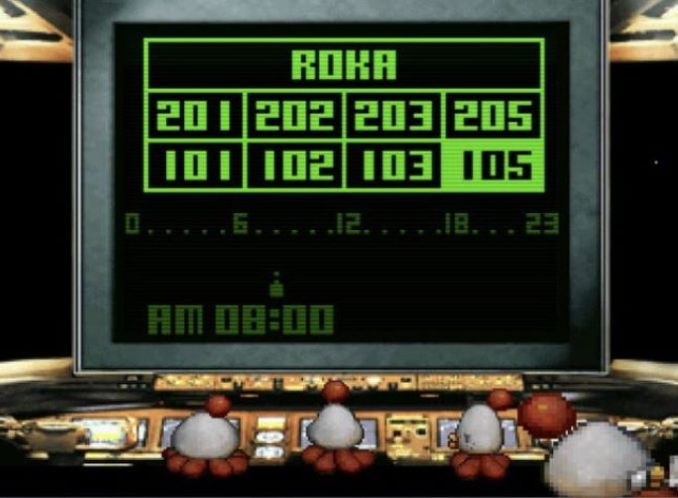
Fans of studio Love-de-Lic and the later projects of former Love-de-Lic staffers like Chulip and Chibi-Robo have long wanted a Western release of UFO: A Day in the Life, with interest only skyrocketing since last year’s incredible port of Moon: Remix RPG Adventure. Like Moon, UFO is a rather surreal and psychedelic adventure game that involves rescuing bizarre creatures from the world. Instead of Dragon Quest-esque monsters, though, the protagonist is tasked with rescuing aliens who crash landed on Earth and are now stranded. The aliens in question are completely invisible, and have to be discovered with a camera-like device which prints out negatives. You can then beam back up to your UFO to get the negatives developed, rescuing the aliens and unlocking more areas to explore.
UFO is a lot less mercurial than Moon—the experience is closer to a puzzle game than than anything, and it’s far less protracted thanks to the time and picture limit allotted on each trip to Earth—so it’s a perfect follow-up to that sprawling saga. We can only hope UFO can ride out on the intensely positive reception received from Moon’s debut in the West (and hopefully L.O.L: Lack of Love will follow suit to complete the Love-de-Lic trilogy!).
Vagrant Story
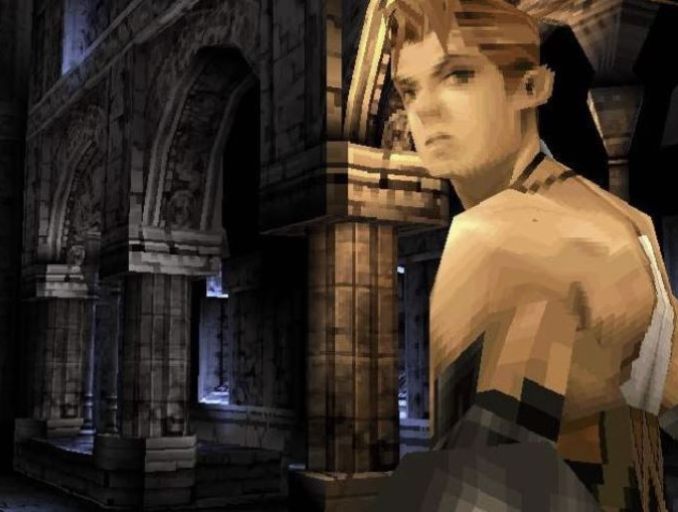
Vagrant Story is a Final Fantasy game in everything but name only, but perhaps benefited from its slight dissociation from the larger series. The game takes place within the world of Ivalice, the shared setting of Final Fantasy Tactics and Final Fantasy XII, and is unique in its hyper-focused, personal storyline which lies in direct contrast from the more sweeping epics usual for Ivalice. The game is a solo action RPG that takes place entirely within a desolate city; Ashley Riot, the protagonist, is sent on a mission by his band of knights to retrieve a cult leader who kidnapped a Duke’s son.
There’s a hefty amount of puzzle and platforming elements present in the game, and the combat exudes style with a pausable real-time system in which individual body parts can be targeted and combos can be seamlessly chained together. Vagrant Story is one of the most well-regarded RPGs on the PS1 because of its singular combat and rich storyline, so it’s a bit of a mystery why this classic hasn’t received the remaster treatment from Square Enix yet.
Xenogears
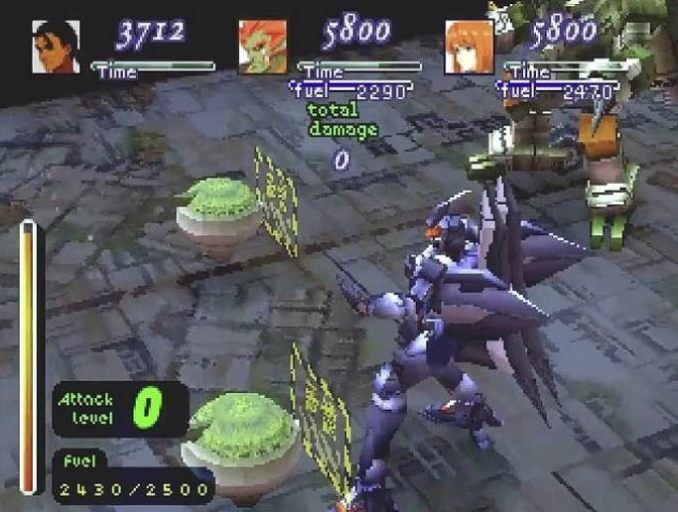
The Xeno franchise only seems to get more ubiquitous with each entry, so it’s a shame that the game that started it all has been left behind in the dust. Xenogears has maintained quite the cult following since its release thanks in part to its story, which uses psychotherapy and Lacanianism as an aesthetic in much the same way Evangelion does with Christian imagery. Xenogears is also infamous for its second disc, which drops gameplay almost completely and resembles something closer to a sound novel. Director Tetsuya Takahashi has since gone on record saying the team simply didn’t have the staff or deadline to complete their vision, so Takahashi made the executive decision to finish the story how they could rather than leaving it unfinished.
Thank God he decided to do this, too. Xenogears wouldn’t be what it was if it was presented in any other way, and the final product is one that’s left fans mystified and curious ever since. Beyond all the legends surrounding Xenogears’ production, it’s a fun game with great mech combat and a beautiful soundtrack. It’s a massive hole in the currently available PS1 catalogue; hopefully it and Monolith Soft’s later project Xenosaga will see the light of day again soon.
Austin Jones is a writer with eclectic media interests. You can chat with him about horror games, electronic music, Joanna Newsom and ‘80s-‘90s anime on Twitter @belfryfire